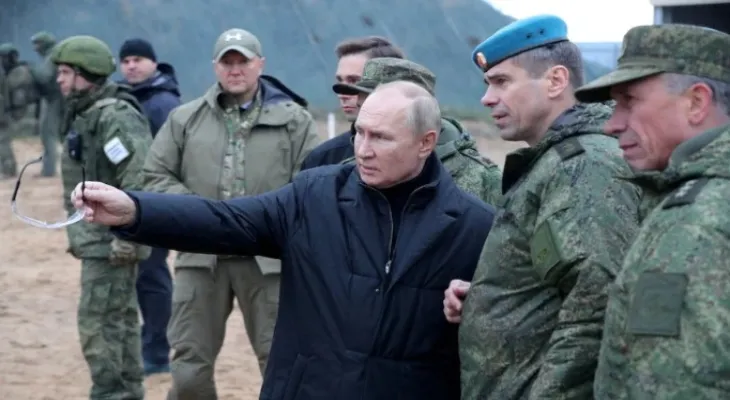Search here
Newspaper
Search here

Arab Canada News
News

Published: November 7, 2023
Russia officially withdrew on Tuesday from a historic security treaty that imposed restrictions on key categories of conventional armed forces, holding the United States responsible for undermining security in the post-Cold War era by expanding the North Atlantic Treaty Organization (NATO).
The 1990 Treaty on Conventional Armed Forces in Europe, signed a year after the fall of the Berlin Wall, set verifiable limits on categories of conventional military equipment that NATO and the Warsaw Pact could deploy at the time.
The treaty aimed to prevent either side in the Cold War from amassing forces to launch a rapid attack against the other in Europe, but it was unpopular in Moscow because it weakened the Soviet Union's superiority in conventional weapons.
Russia suspended its participation in the treaty in 2007 and halted its effective participation in 2015. After more than a year of the full-scale Russian invasion of Ukraine, President Vladimir Putin signed a decree in May nullifying the treaty.
The Russian Foreign Ministry also said that Russia officially withdrew from the treaty at midnight, adding that it is now "history".
The ministry stated, "The Treaty on Conventional Armed Forces in Europe was concluded at the end of the Cold War when the formation of a new global and European security structure based on cooperation seemed possible, and relevant efforts were made."
What is the Conventional Forces Treaty?
The Treaty on Conventional Armed Forces in Europe was signed by representatives of NATO member states and Warsaw Pact members on November 19, 1990, in Paris, and came into effect on November 9, 1992.
The treaty stipulated limits on conventional forces of the two military alliances as well as limitation on deploying forces along the line of contact between the two alliances to prevent surprise attacks and large-scale offensives in Europe.
It also aimed to set comprehensive limits on key categories of conventional military equipment in Europe (from the Atlantic Ocean to the Ural Mountains) and obliged the destruction of weapons quantities exceeding treaty limits.
With the dissolution of the Warsaw Pact and then the Soviet Union, especially with NATO’s expansion as former Warsaw Pact countries and Soviet republics joined NATO in several stages, the treaty mechanisms designed to maintain the power balance between the two military and political alliances began to lose meaning.
As a result of NATO expansion, the bloc exceeded the levels set by the treaty in terms of the number of weapons and equipment at the expense of the shares of former Eastern Bloc countries.
The terms of the agreement also included limits on the number of tanks, artillery, aircraft, and other conventional weapons, as follows:
* Tanks: The maximum that each side can amass must not exceed 20,000 tanks, including only 16,500 tanks in combat units.
* Armored vehicles: Limit of 30,000 armored vehicles, including no more than 27,300 armored vehicles in combat units.
* Artillery: Maximum 20,000 artillery pieces on each side, and the number of artillery on the fronts must not exceed 17,000 pieces.
* Fighter aircraft: Maximum of 6,800 aircraft.
* Attack helicopters: Maximum of 2,000 aircraft.
Comments